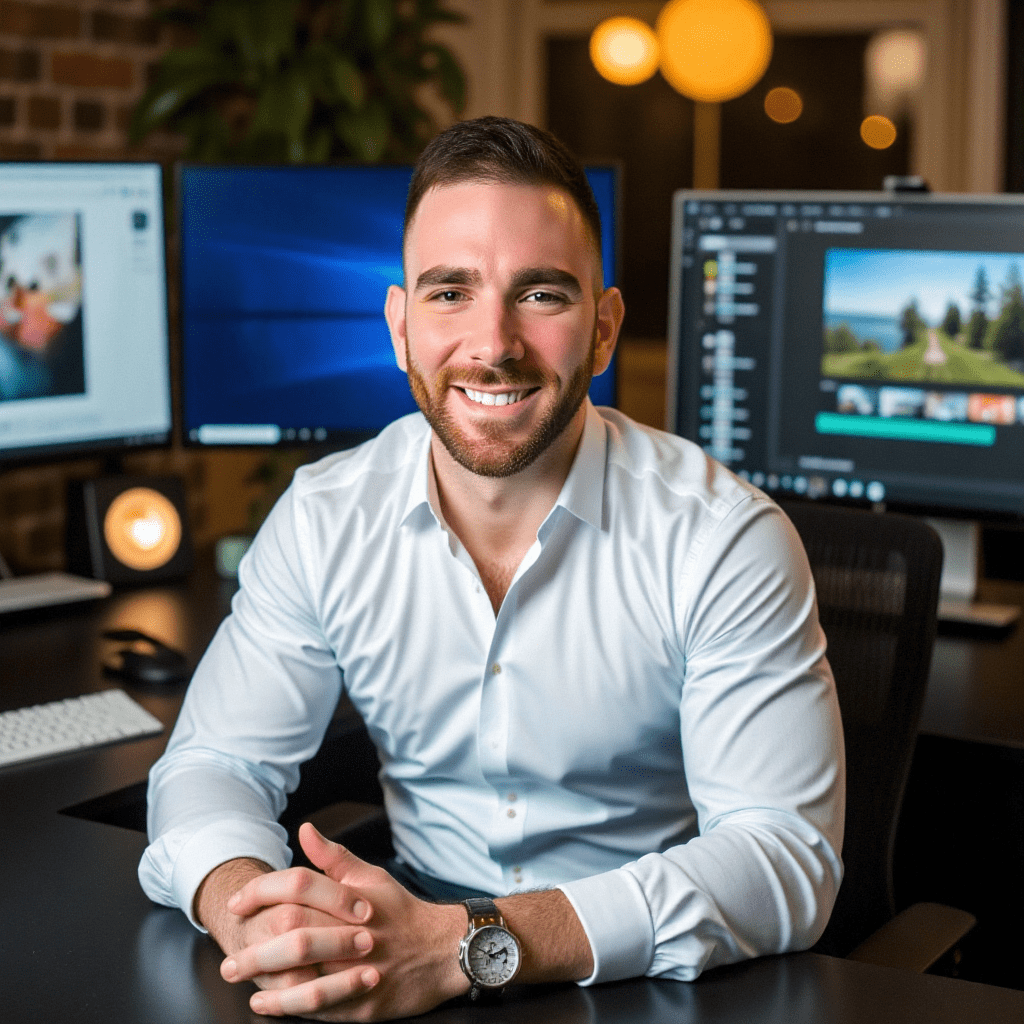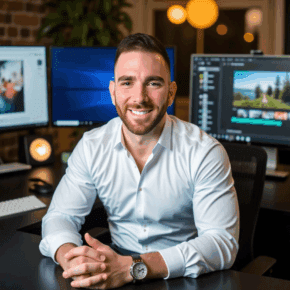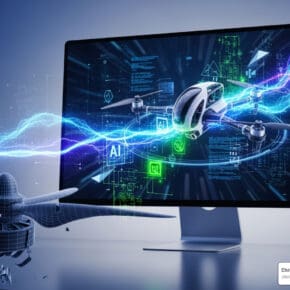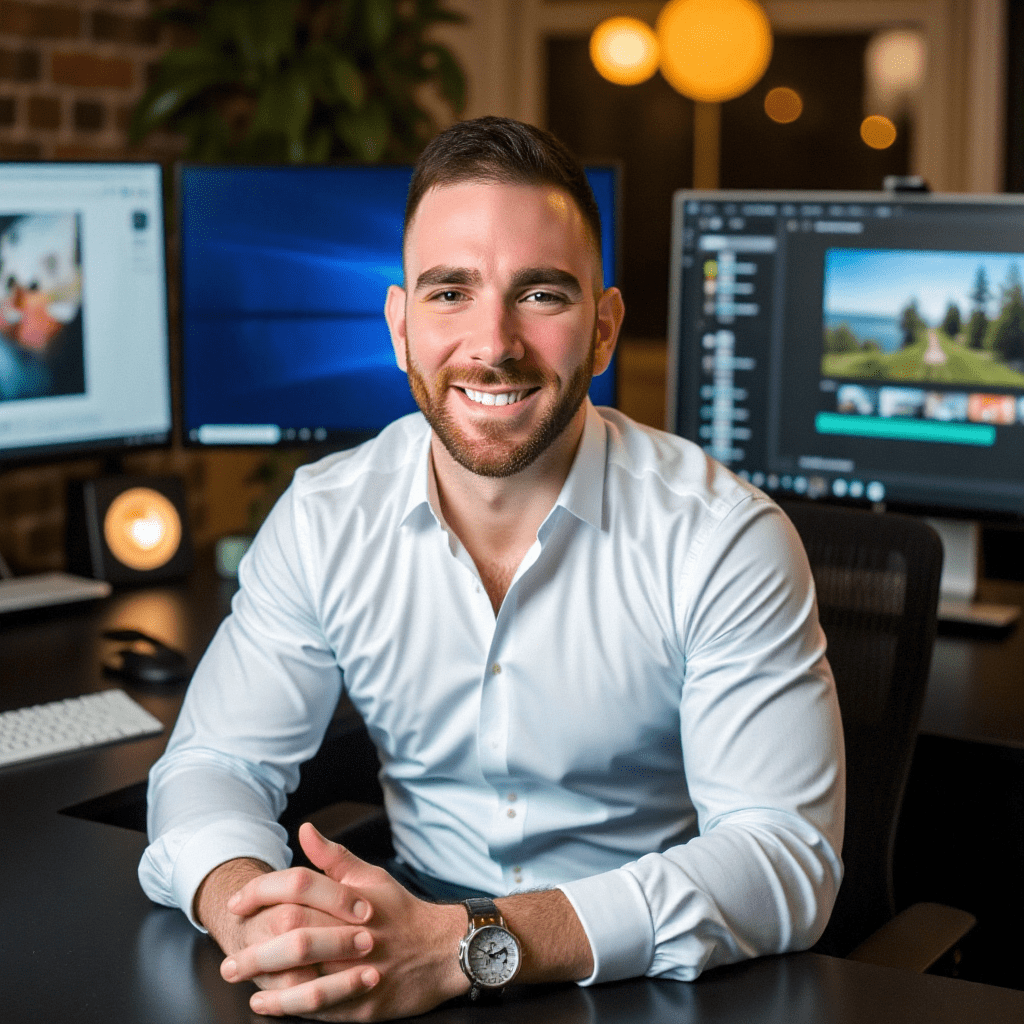Why Visual Storytelling Videos Transform Your Brand’s Message
Visual storytelling videos combine narrative, emotion, and imagery to communicate messages that audiences remember. Unlike static text, they engage viewers with compelling characters, conflicts, and resolutions told through visuals, sound, and motion.
Their effectiveness comes from a few key principles. Viewers retain up to 95% of a message through video versus only 10% via text because our brains process visuals much faster. This creates a powerful emotional connection—and emotionally connected customers can be 52% more valuable than merely satisfied ones. With videos under two minutes getting the highest engagement on platforms like YouTube and Instagram, it’s the perfect format for building brand trust.
Every memorable video, from a heartwarming ad to a viral launch, succeeds because it tells a story, not just a pitch. Whether you’re a boutique hotel showcasing your property’s character or a restaurant highlighting a farm-to-table philosophy, the story is what sticks.
This guide will walk you through the psychology, essential elements, and strategic steps to craft videos that convert. You’ll learn practical techniques, measurement strategies, and common pitfalls to avoid.
I’m Christian Daniel, an NYC-based video editor and founder of Christian Daniel Designs, with over two decades of experience producing visual storytelling videos for brands like The Plaza Hotel and Park Hyatt Chicago. I’ll share the exact frameworks I use to help businesses turn their stories into engaging video content that drives results.
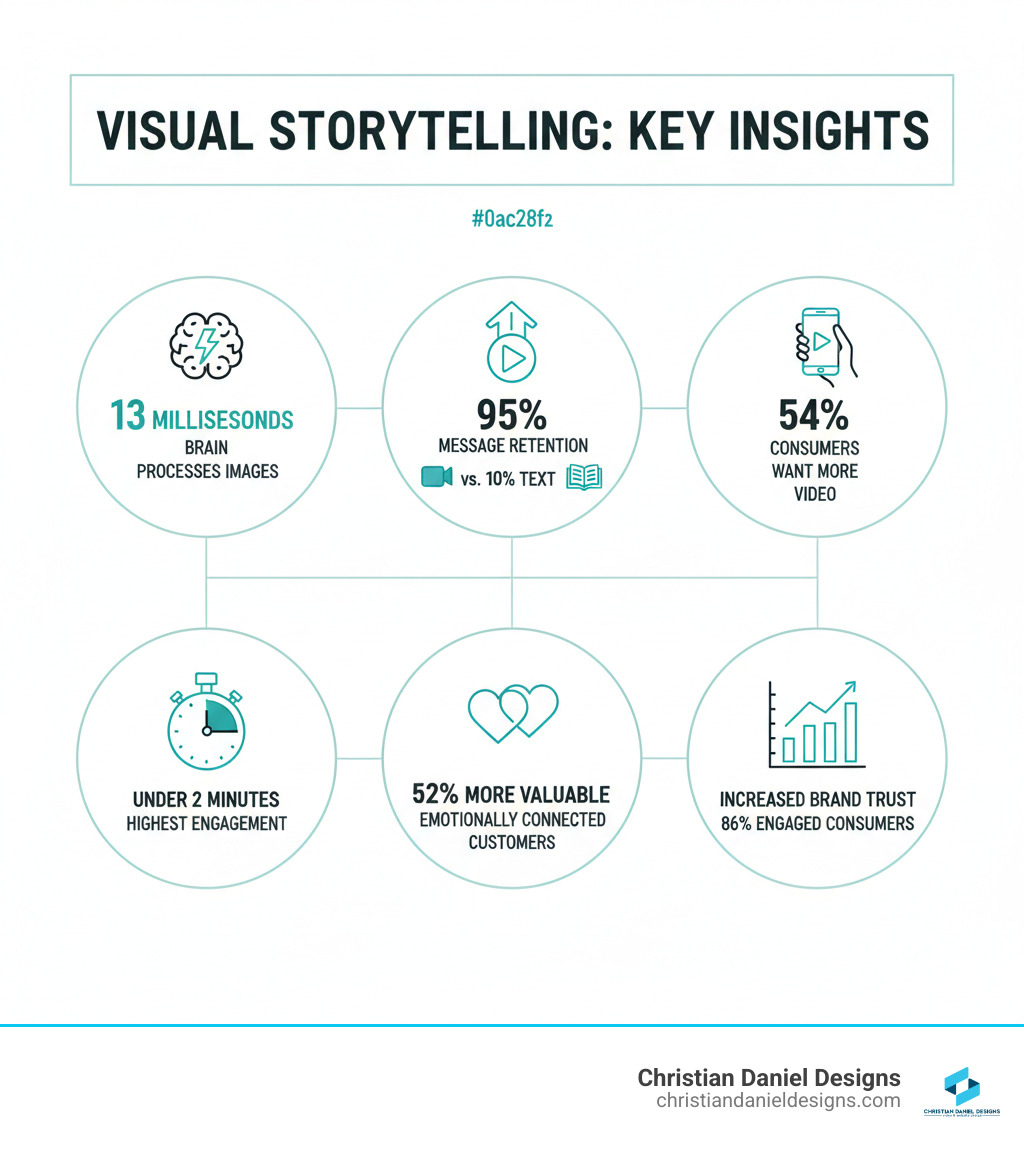
The Psychology of Sight & Story: Why Visuals Captivate You
Think about the last video that stopped you mid-scroll. It grabbed your attention in seconds because your brain is fundamentally wired to process visual information. Understanding this psychology is the foundation of effective video work.
Researchers at M.I.T. found that humans can process images in as little as 13 milliseconds. Your brain recognizes a visual before you’re even consciously aware of it. Text, on the other hand, requires slow, sequential processing. This speed advantage is why video is so powerful, but it goes deeper. A compelling visual story makes you feel something, creating memories that last.
This connection is part of human evolutionary makeup, from cave paintings to silent films. Visual storytelling taps into something primal. For more on leveraging this, check out my insights on Video Marketing for Business.
Why Visuals and Emotion Are a Powerful Combination
The effectiveness of visual storytelling videos is rooted in a few key principles. First, the processing speed advantage means viewers retain up to 95% of a message through video compared to only 10% via text. This can make or break a marketing campaign.
More importantly, emotion drives action. I always tell my clients that facts tell, but feelings sell. A video that makes you laugh or cry creates a strong neural pathway. You’ll always remember how a video made you feel, and that feeling is what drives purchasing decisions. This is why I focus on creating relatable narratives that mirror the audience’s hopes or challenges. When viewers see themselves in a story, they become emotionally invested.
This emotional connection is crucial for building brand trust. Emotionally connected customers are up to 52% more valuable and far more likely to choose your brand. When I create visual stories, I’m not just promoting a product—I’m building a relationship between the brand and its audience. Visuals also make complex information digestible, turning confusing processes into clear, engaging explanations through tools like animation.
Here’s a clear comparison:
| Feature | Traditional Ads | Story-Driven Videos |
|---|---|---|
| Engagement | Forced, often ignored | Engaging, captivates attention |
| Emotional Connection | Superficial, product-focused | Deep, relatable, builds empathy |
| Conversion Power | Low, relies on direct pitch | High, persuades through narrative and emotion |
| Viewer Retention | Low, easily skipped | High, viewers stay to see the story unfold |
| Brand Perception | Transactional | Relational, memorable |
If you want to dive deeper into crafting resonant content, I’ve put together more insights on creating engaging content that you might find helpful.
The Core Elements of Compelling Visual Storytelling Videos
Crafting compelling visual storytelling videos requires mastering three pillars: narrative structure, visual composition, and sound design. Get these right, and you’ll create videos that don’t just inform—they transform.
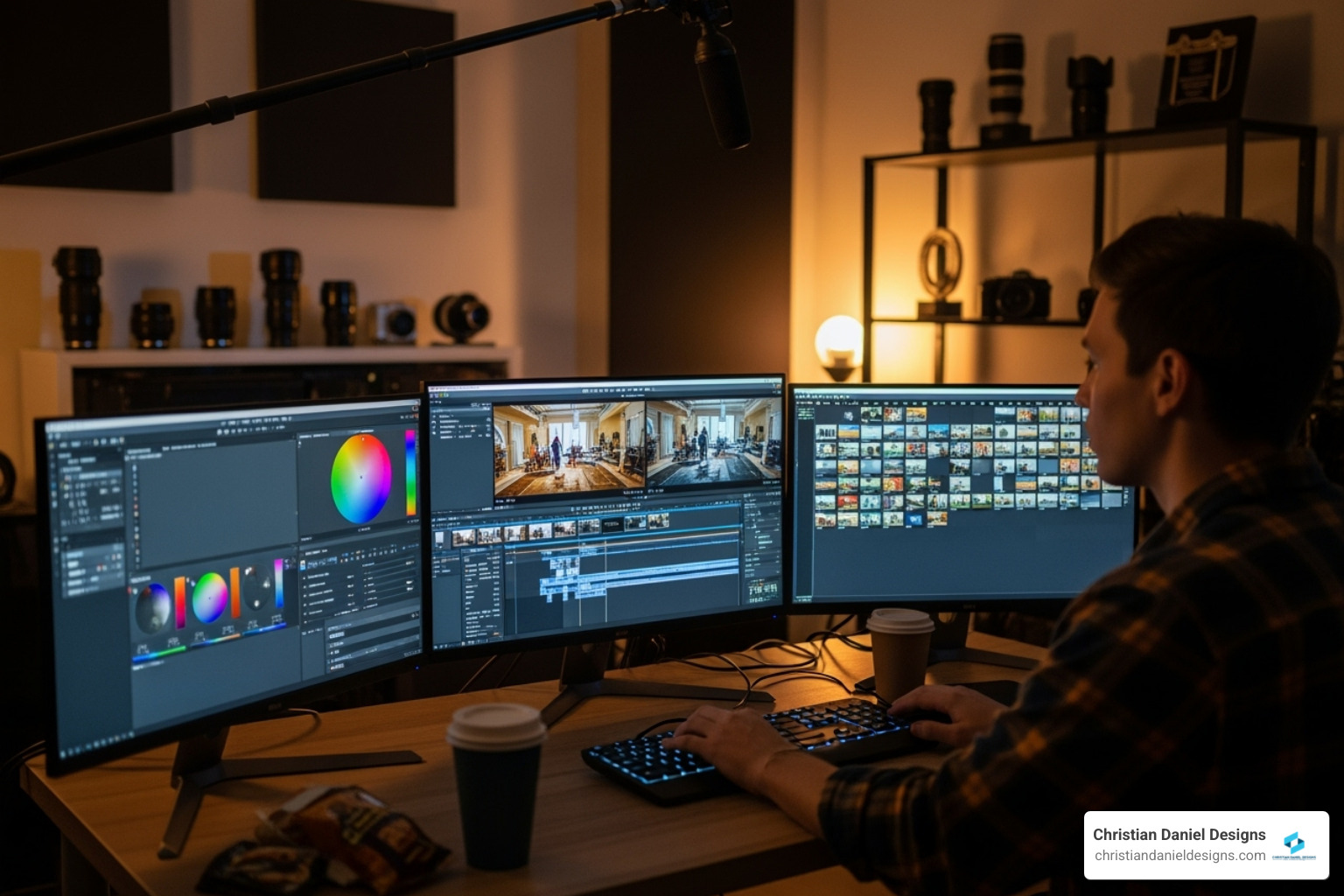
The Narrative Structure: Your Story’s Blueprint
Every great video follows the classic story arc: a beginning that introduces characters and sets the scene, a middle where conflict creates tension, and an end that brings resolution. This simple blueprint has worked for thousands of years.
I often use “The Hero’s Journey” framework, where your customer is the hero. The key is developing a relatable main character your audience can root for. When I created videos for The Plaza Hotel, I focused on guests experiencing treasured moments, not just the building. That’s the character your audience connects with. The journey—the struggle and triumph—is what makes your message stick.
Visual Composition and Cinematography
Every frame speaks to your audience. My visual choices are emotional ones that shape how viewers feel.
- Camera angles are a powerful tool. A low angle makes a subject feel powerful or heroic. A high angle can create a sense of vulnerability. An eye-level shot builds a direct, honest connection.
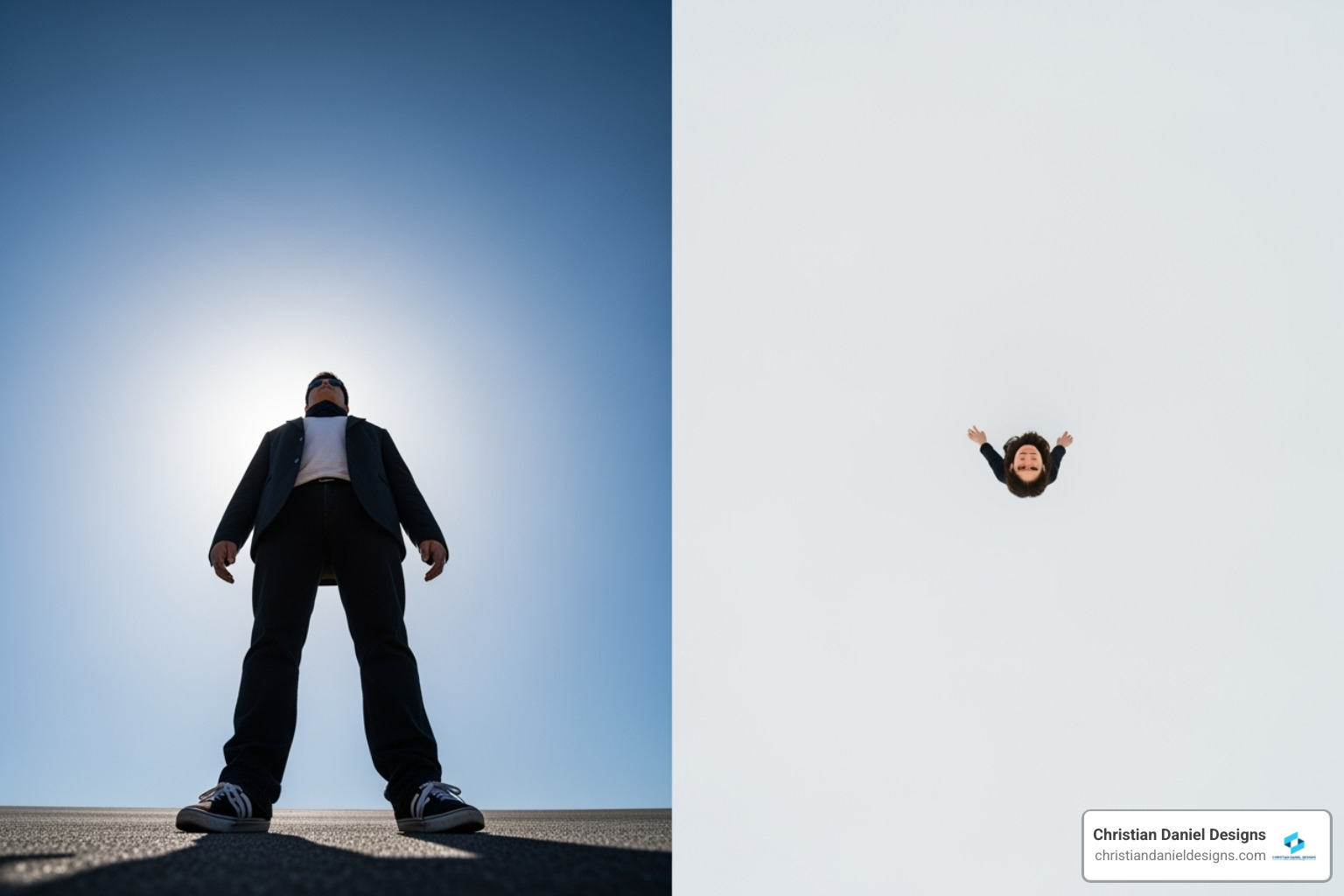
- Lighting is a master storyteller. Bright, high-key lighting conveys happiness, while shadows and low-key lighting create mystery and tension.
- Color psychology works subconsciously. Red evokes energy and urgency, while blue communicates trust and calm. I choose color palettes to guide the audience’s emotional response.
- Pacing and timing control the rhythm. Fast cuts create excitement; slow shots build tension. Since videos under two minutes perform best, I keep the pace tight, ensuring every frame earns its place.
The Power of Sound and Music
Stunning visuals fall flat with weak audio. Sound is the soul of your visual storytelling videos.
Music sets the mood instantly and is the most direct route to emotion. A single cue can transform a scene. Sound design adds realism—the rustle of leaves or clinking of glasses—that immerses viewers in your world. Voice-over narration can guide the narrative and add a personal, trustworthy touch. And never underestimate the impact of silence; it can amplify tension or highlight a crucial moment.
When I bring these elements together, I create a multi-sensory experience. See how I integrate these techniques in my guide on How to Create Engaging Video Content.
From Concept to Conversion: A Strategic Approach
A compelling video needs a clear strategy to reach the right audience and achieve business goals. A beautiful video without a plan is a missed opportunity.
Developing Your Video Storytelling Strategy
Before any creative work begins, I build a strategic roadmap with my clients.
- Define your target audience: Who are you trying to reach? Understanding their pain points is critical. A video for honeymooners will feel different from one for business travelers.
- Set clear goals: What should the video accomplish? Brand awareness, lead generation, or direct sales? Specific goals lead to effective videos.
- Choose the right platform: Optimize your video for where your audience spends their time. YouTube is great for in-depth stories, while Instagram and TikTok demand short, punchy content.
- Create a content calendar: Plan your video content in advance to maintain consistency and align with marketing campaigns.
For a deeper dive, check out my guide on Digital Marketing Video Strategy.
Measuring the Effectiveness of Your Efforts
Once your visual storytelling videos are live, you must measure their impact. The metrics that matter most are your Key Performance Indicators (KPIs).
- Watch time and viewer retention show if your content is engaging. A big drop-off early on means your hook isn’t working.
- Click-through rates (CTR) measure how many viewers take the next step after seeing your call-to-action.
- Social shares and comments indicate emotional resonance and organic reach.
- Conversion rates are the ultimate metric, showing if your video led to sales, sign-ups, or bookings.
Regularly analyzing this data helps optimize future content. To maximize your impact, explore my insights on Strategies to Boost Your Video Marketing ROI.
Common Mistakes to Avoid
After two decades in this field, I’ve seen the same mistakes repeatedly. Avoid these pitfalls:
- Low-quality production: Pixelated visuals or muffled audio instantly kill credibility and signal unprofessionalism.
- Overly complicated narratives: A good story is focused. Pick one clear message and tell it well.
- No clear call-to-action (CTA): Always tell your audience what to do next, whether it’s visiting your site or booking a stay.
- Ignoring platform optimization: A video must be adapted for each platform’s unique format and audience expectations.
- Forgetting the emotional core: If you lose sight of the emotion you want to evoke, your video becomes just another forgettable ad.
Advanced Techniques & Future Trends
The world of visual storytelling videos is always evolving. Staying ahead means embracing new techniques while keeping storytelling fundamentals strong.
Practical Techniques for Crafting Your Visual Storytelling Videos
Several advanced techniques can make your videos unforgettable.
- Animation and motion graphics are my go-to tools for simplifying complex ideas. Whiteboard animations, for example, can transform abstract concepts into clear, digestible narratives.
- Metaphors and symbols convey deeper meaning without saying a word. A single visual icon, like a lightbulb for an idea, can communicate a concept instantly.
- B-roll footage is the supplementary footage that lets you “show, don’t tell.” Instead of just having someone talk about a restaurant, I intercut shots of sizzling dishes and happy diners to make the story feel immersive and authentic.
My Video Editing Services for Marketing Campaigns integrate these methods to create videos that captivate.
The Rise of Interactive Video and AI
The future of video is interactive and intelligent. Interactive video can act like a “choose your own adventure” for your brand, letting viewers click to explore paths, product details, or chapters. Used thoughtfully, it deepens engagement beyond a linear edit.
AI now streamlines parts of my process too. I use AI-assisted tools to draft scripts, generate storyboards, pull selects, and create quick narration passes for prototypes. These tools don’t replace creativity; they amplify it, so I can spend more time refining the emotional arc and polishing the final cut. The result is faster iterations and more personalization without sacrificing craft.
When to Collaborate with a Professional
While DIY tools are accessible, there’s a difference between making a video and making a video that achieves business goals. Collaborating with a professional is often the smartest investment.
When you work with me, you get more than technical skills; you get 20+ years of experience translating visions into compelling narratives for small businesses and hospitality brands. You also gain access to high-end equipment and my expertise in cinematography and editing, ensuring a polished final product. Most importantly, I save you time and resources, handling the entire process from concept to delivery so you can focus on running your business.
For more on the value I bring, check out my Award Winning Video Services Guide.
Frequently Asked Questions about Visual Storytelling
How long should a visual storytelling video be?
The ideal length depends on the platform and your goal. Videos under two minutes generally see higher engagement on most social media platforms like Instagram and TikTok. However, longer formats can work for in-depth tutorials or documentaries on platforms like YouTube.
My advice is to test different lengths with your specific audience. Data from your own viewers is the best guide. For most of my hospitality and small business clients, shorter, punchy narratives deliver the biggest impact.
Can I do visual storytelling on a small budget?
Absolutely. A compelling story matters far more than a Hollywood-sized budget. I’ve helped countless small businesses create powerful visual storytelling videos with limited resources.
Focus on a strong story—that costs nothing but creativity. Your smartphone shoots high-quality video, and natural lighting is free and often looks best. There are also many affordable editing software options available. Authenticity often outperforms big-budget productions because it feels genuine. The emotional connection you create requires heart and a story worth telling, not expensive equipment.
What’s the difference between a brand video and a visual story?
This is an important distinction. A brand video typically focuses directly on your company—your features, values, or mission. It’s a direct presentation of what your company offers.
A visual story, on the other hand, focuses on a narrative that evokes emotion, with your brand playing a supporting role. Instead of telling viewers what you are, you show them why you matter in their lives. For example, a visual story for a hotel might follow a guest’s journey to relaxation, with the hotel as the setting for that change.
Both have their place, but in my experience, stories create deeper, more lasting emotional connections. They’re what people remember, share, and act on.
Conclusion
After exploring visual storytelling videos, the main takeaway is this: the brands that win hearts are the ones that tell unforgettable stories. Story is king, emotion drives connection, and strategy ensures impact.
The power of visual storytelling lies in its ability to transform your message from background noise into something that stops people mid-scroll. It’s not about having the biggest budget; it’s about being authentic, strategic, and understanding that your audience craves connection.
As an NYC-based video editor at Christian Daniel Designs, I’ve spent over 20 years helping small businesses and hospitality brands in New York City, Queens, Jersey City, and Hoboken tell their unique stories. When you get the story right, the engagement, trust, and conversions follow.
If you’re ready to captivate your audience and turn viewers into loyal customers, I can help you explore how whiteboard animation videos or other dynamic storytelling techniques can bring your brand’s story to life. Your story deserves to be told beautifully—let me help you tell it.
